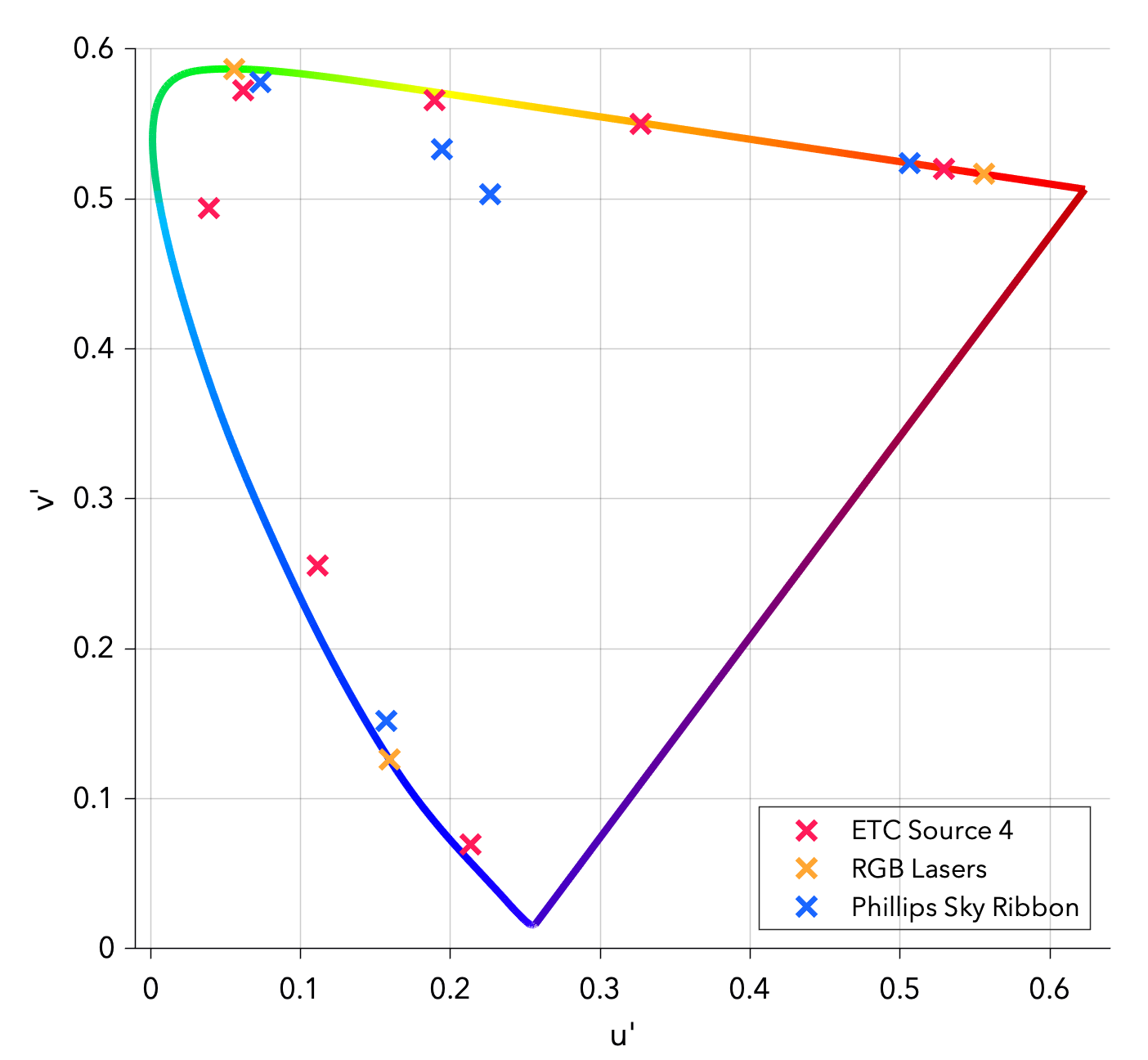I'm trying to compare photometrics between the Chauvet E-910FC and the ETC CSSPOT. I expected the E-910 to be brighter based on it's actual power consumption (240W vs. 147W).
If I'm doing this correctly, the E910 with 19 deg lens at 30 feet gives 84 footcandles. The CSSPOT with same lens and distance gives 107.6 footcandles.
Do I understand this correctly? Are the optics that much more efficient in the CSSPOT? Any help would be appreciated!
If I'm doing this correctly, the E910 with 19 deg lens at 30 feet gives 84 footcandles. The CSSPOT with same lens and distance gives 107.6 footcandles.
Do I understand this correctly? Are the optics that much more efficient in the CSSPOT? Any help would be appreciated!



